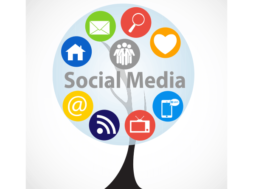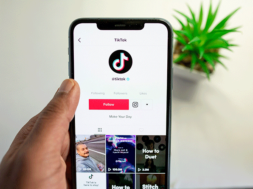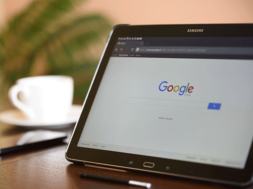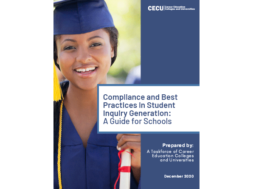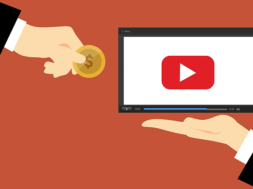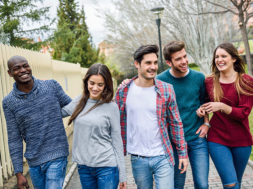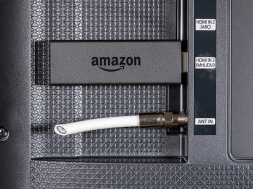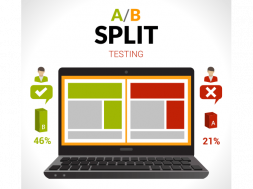
By Suzanne Gragg, Vice President of Public Relations & Social Media, Gragg Advertising
It is curious an illness causes divisiveness. There are two, clear sides on the topic of COVID-19: one believes it is a hoax and conversely, one that it is a public health emergency. Setting this aside, it has become a defining part of 2020. With millions impacted across the world, COVID-19 is challenging communities and making us reevaluate basic practices and procedures.
As the pandemic normalizes itself into our daily life and society, people are increasingly turning to social media for their news, information, and entertainment.
Mainly there is a resurgence of the original point behind it: to connect with loved ones or for community support and interaction.
In the absence of in-person human interaction, consumers are turning online to fill that void. Users are browsing social channels such as Facebook, Instagram, and Twitter at 53 percent, 32 percent, and 23 percent more, respectively.1 In a study conducted in May across 20 countries, 42 percent of consumers report they spend more time on social media because of the pandemic. Not surprisingly the percentage jumps to 54 percent for Gen Z.2 From a group of 18 million users, it was documented that there was a 15-20 percent increase in posts.3
Social media is frequently criticized for exacerbating feelings of Fear of Missing Out (FOMO), depression or isolation, especially in teenagers. During the coronavirus pandemic, people credit social media for making them feel less lonely and anxious. Further, consumers report they feel less pressure to represent themselves in a better light on social media.4 These insights enable businesses to craft the right approach when interacting with consumers.
Schools are also embracing the increased opportunity to connect with students and prospective students through their social media platforms. From a marketing standpoint, in specific industries, social media is booming. Advertising agencies and market brands have doubled their Social Media Management spending1 and schools should take advantage of the most captive audience in history.
As people navigate a heightened need/want to be online, screen time rates, are soaring during coronavirus. A recent report suggests overall screen time is up 69 percent.1 And what are people doing on their screens? Social media. Channels like Facebook and Twitter have become the go-to for pandemic information, communication with friends and family, political propaganda, job searches, shopping, watching videos and more. In terms of engagement, one study of 25,000 consumers across 30 markets indicated a 61 percent increase over normal rates.3
One report says, of those surveyed, incoming engagements increased on average by 44 per day and 7.3 more engagements per post across all networks and industries.
COVID-19 has even influenced when to post content. The ideal day and times to post on Facebook pre-coronavirus were Wednesday from 11:00 a.m. and 1:00-2:00 p.m. Now the best days and times to post are Monday, Wednesday, and Friday from 10:00-11:00 a.m.5 This may not seem impactful, however it is important to plan your content calendar with an accurate posting strategy in mind.
With this proliferation of social media use, the rise of pandemic-related “fake media” and “hoaxes,” or “misinfodemics or infodemic” as some have dubbed it, was spurred on by trolls and bots. Social media was being used as a tool to spread misinformation. As students and parents increasingly rely on social media for information concerning COVID-19, schools are in a position to allay concerns and fears by echoing science-based information posted by state and local governments or healthcare providers. Channels such as Facebook, Twitter and YouTube have also cracked down on efforts to promote unproven information by removing content, deleting groups, or posting warnings. Some declare these actions as long overdue while others believe it is censorship. Regardless, as Nov. 3, 2020, nears and the blanketing of political ads occur, the issue will no doubt heat up. It does raise the question of, “how far will they go?” If social channels become the arbiters of acceptable and unacceptable content, no posts are safe from their seeming editorial tyranny.
In times of crisis, businesses often scale back their marking efforts, but COVID-19 has presented a unique opportunity for businesses to really connect with the consumer. The above numbers speak to the genuine need for a one-on-one connection with each other and that includes businesses. Whether it is using Facebook or Instagram Live to connect with students, showing charitable works on Instagram Stories or capturing your employees in funny vignettes as they work from home, social media became one of the primary sources of human connection. People are hungry for a direct connection and successful businesses are poised to cultivate those meaningful relationships.
While screen time and engagement are up overall, social media professionals scramble to pivot campaigns, adjust content calendars and generate fresh ideas to carry clients’ messages. Simply ceasing to post on social media channels is not an option. The heightened environment demands an investment in fresh content and copy. One additional factor for businesses to consider when ramping up their social game is the Facebook algorithm. If this does not ring any bells, the algorithm is how Facebook decides which posts users see, and in what order, every time they check their newsfeeds. Rather than publish content chronologically, posts and ads are presented based on what Facebook sees as relevant to the user favoring native posts of friends and family over brands. The algorithm is responsible for a steady reduction in organic reach since its inception. As of late 2019, the average reach for Facebook posts was down by 2.2 percent meaning that brands could reasonably expect their posts to be seen by about 5.5 percent of their Page’s followers.6 Given the algorithm-driven nature of organic social and the rise of coronavirus, schools cannot afford to run their social media management like business as usual.
Businesses must work a little bit harder to be recognized on their chosen channels. A strong marketing plan must include thoughtfully constructed brand messaging and a revived social presence. What worked before the pandemic perhaps will not resonate with an audience navigating a COVID-19 world. People are experiencing a wide range of emotions and businesses should take the time to understand this updated audience and how best to reach them. Focus less on ROI and more on engagement metrics like clicks, shares, and likes. Now is also the time to test the boundaries. If you are on Facebook only, why not explore Instagram or Snapchat? Experiment with different kinds of content (i.e., video) or tools (polls and questions on Facebook or Snapchat) to see how your audience responds. Reputation/community management should be a cornerstone of your marketing strategy which many businesses unfortunately overlook. Consumers are demanding the one-on-one experience so take the time to read comments and respond quickly.
Another way businesses can connect with their audience is through user-generated content. Ask for photos or videos of your students preparing for the next start or have them capture the classroom (virtual or real).
Social media advertising is also experiencing an increase in leads and conversions. Again, with the influx of people on the major social media platforms, the audience has expanded and is ready to learn about attending your school and getting a job. In July, 71.4 percent of our display clients exceeded their lead goals. One client has experienced a 70 percent increase in leads and a 10 percent increase in conversions. The key is strong creative and copy. Our clients have also experienced an increase in impressions and engagements on the organic side. One client saw a 44.6 percent increase in impressions and a 120.6 percent increase in organic engagements during coronavirus.
Our clients are focusing on a one-on-one relationship with their students and prospective students. Gragg Advertising is incorporating more Stories for schools and implemented additional tools such as polls and questions. Knowing students face many uncertainties with the return to virtual or in-school classes, schools are expressing a high level of communication to their communities using social media as their platform. In addition to a focus on starts, schools are focusing on the health and safety of their students cautioning them to maintain social distancing, wear masks and wash hands in keeping with state and local standards. They have also taken time to highlight their instructors or students who stand out. Since events are on hold, content on schools’ social media have shifted to different content that engages, entertains and educates students and prospective students. In the case of some of our trade-focused schools, students have been sharing their work which we post on platforms like Facebook and Instagram. Schools have adapted to the new normal and that applies to social media, we well.
The question remains, “Is this growth sustainable?” There is no doubt the coronavirus created a pandemic boost for social media but despite the uncertainty going forward, consumers’ online habits have likely been indelibly changed. The reliance on social media for news, entertainment and human connection will drop but remain higher than pre-COVID-19 rates. Users will still demand a personal experience from businesses with which they interact. So unequivocally, content and copy moving forward will need to evoke that “coronavirus” sense of emotion and connection. Challenges such as the algorithm pushing valuable content down in favor of more personal posts will still exist and in the coming months, as our country returns to business as usual and the election is decided, screen time will likely decrease but remain higher than pre-COVID-19 counts. Social media strategies should be reevaluated regularly to ensure the audience enjoys thumb-stopping content delivered using best practices. Many would argue against this statement but perhaps COVID-19 changed social media for the better. People are feeling better about themselves, there is an emphasis on establishing a human connection between businesses and consumers are showing an insatiable need for information. Only time will tell but until then, wash your hands, wear a mask and social media on.
References
- Katie Keane, Elise Ruland. COVID-19’s Impact on Social Media Usage and Strategies https://www.r2integrated.com/r2insights/covid19s-impact-on-social-media-usage-and-strategies
- Katie Gilsenan. (July 1, 2020). Closely connected: social media’s role during COVID-19. https://blog.globalwebindex.com/trends/social-media-covid-19/
- Ryan Holmes. (April 24, 2020). Is Covid-19 Social Media’s Levelling Up Moment? https://www.forbes.com/sites/ryanholmes/2020/04/24/is-covid-19-social-medias-levelling-up-moment/#391dd8666c60
- Katie Gilsenan. (July 1, 2020). Bringing Us Closer: Social Media During Covid-19. https://wearesocial.com/blog/2020/07/bringing-us-closer-social-media-during-covid-19
- Elizabeth Arena. How COVID-19 has changed social media engagement. https://sproutsocial.com/insights/covid19-social-media-changes/
- Paige Cooper. (January 27, 2020). How the Facebook Algorithm Works in 2020 and How to Make it Work for You. https://blog.hootsuite.com/facebook-algorithm/
SUZANNE GRAGG has over 20 years of government relations, public relations, and social media experience on the East Coast and Midwest. She excels in creating successful, targeted strategies for clients drawing from her experience to reflect their unique needs. Her keen public relations acumen and sharp instincts positioned Ms. Palmer to provide clients in crisis with exceptional, targeted advocacy with measurable results. Ms. Palmer worked on Capitol Hill in a number of capacities ranging from Legislative Assistant to Legislative Director. Seeking a change, Ms. Palmer left Capitol Hill to serve as a policy and appropriations advocate for school districts and institutions of higher education and later as the Director of Public and Government Relations where she successfully spearheaded multiple initiatives on behalf of an embattled industry, as well as developed constituencies. In 2012, Ms. Palmer transitioned her public relations experience to Gragg Advertising where she has successfully worked with clients in the clean water, human resources, and career education industries. In 2015, she added social media to her portfolio where both Social Content Management and Social Media Marketing (SMM) have grown exponentially.
Contact Information: Suzanne Gragg // Vice President of Public Relations & Social Media // Gragg Advertising // 571-332-9778 // spalmer@graggadv.com // www.graggadv.com // FB: @GraggAdv; Twitter: @GoWithGragg; Instagram: @GraggAdvertising; LinkedIn: @Gragg-Advertising
